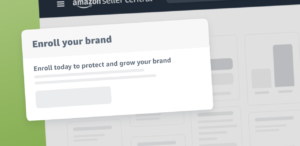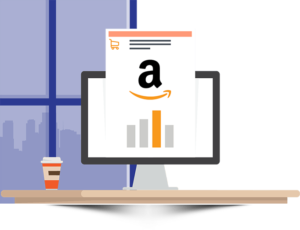
Unlocking Amazon Success: Mastering Total ACOS Optimization
Introduction: In the dynamic realm of Amazon advertising, success hinges on mastering key metrics, and
Deeply understanding your target audience is essential for successfully launching products on Amazon. That’s why regularly conducting consumer research and gathering feedback from your customers is a great habit to get into for e-commerce sellers.
In this article, we’ll talk about how to gather and use customer feedback to launch better products, optimize your marketplace listings, and build customer loyalty.
93% of buyers say that online reviews impact their purchase decisions, and the more and better reviews your product has, the better it will rank in Amazon search results.
Before investing your time and money into launching a new product, you need to ensure that your target audience wants or needs it. If they do, then you’ll want to maximize visibility and conversions by optimizing your product listing.
By actively seeking customer feedback regularly, you’ll gain important insights such as the problems they’re trying to solve and expectations regarding products. This empowers you to not only make better decisions about future products you plan to launch but also tweak your current listings to your audience’s preferences.
Gathering customer feedback to ensure that your audience loves your products also builds stronger customer relationships, loyalty, and referrals, so it’s a no-brainer to prioritize consumer research.
So, how do you understand what your customers want? Just ask them!
Running polls or surveys, sourcing reviews, and having direct conversations with your customers are great ways to get customer feedback on your products and listings.

Running an Amazon competitor analysis is another great way to understand your target market. Knowing how your competitors are developing and marketing their products (and how their customer feedback was going) can help you find gaps in the market that you might be able to fill and opportunities to optimize your listings.
You’ve done the research – now it’s time to use those findings to boost your sales.
Below, we’ll dive into specific questions to ask and tests to run when gathering feedback on each aspect of your Amazon product listings.
Selecting the right product is the first step to launching on Amazon successfully. That means identifying real wants and needs within your audience. During your consumer research, make sure you understand the problem your product will solve and how it fits into customers’ lives.
Once you’ve determined the product you’re going to launch, spend time developing appealing packaging. Your packaging can make a huge difference in whether people click and buy.
Here are a few questions to ask your target audience when gathering customer feedback on product ideas and packaging designs:

The first impression people will get of your product on Amazon? Its title and main image. Those two elements determine whether a potential customer clicks or keeps scrolling, so paying attention to them is important.
Your product title should be clear, and simple, and use the keywords that your audience uses when searching for solutions like yours. Choose a title that accurately describes the product and calls out any key features, differentiators, or selling points if applicable.
The main image is probably the most important element in an Amazon listing since it’s typically the first thing that shoppers will see. Grab (and keep) their attention by using a high-quality image that clearly shows the product. You can also use tactics like interesting angles, bold colors, renderings that show the product being used, etc.
During your customer research, compare multiple versions of your main image to see which one resonates with your audience, then optimize your listing based on your customer feedback. Another idea is to compare your main image to your competitor products’ main images, asking your audience which one they prefer.
Here are a few questions to ask your target audience about titles and main images:
The content on your Amazon listing page, including the product description and A+ Content, is a valuable way to provide more information to your audience. The trick is knowing what to highlight in your description, so it touches on the features your audience most cares about.
Don’t guess what your customers are looking for. During your research, ask open-ended questions like “What matters most to you when shopping for this product?” to uncover their priorities, and lean in on the characteristics that matter most to your audience. Tailor your product description and A+ content to highlight those features via text, images, infographics, and videos.
And don’t forget to use your customer’s language! Pay attention to the specific words they use to describe solutions like yours because it might be different from how you talk about it. Using customer language in your content will help your product listings resonate with them.
Here are a few questions to ask your target audience about your product descriptions:
Investing in continuous customer feedback and research is well worth it for Amazon sellers. The valuable insights you gain from your target audience will not only help you optimize your current listings and boost sales but also give you great ideas for future product launches.
Need help getting started? There are plenty of resources available to help you run effective consumer research and gather customer feedback from your audience.
PickFu is a polling platform that helps e-commerce sellers get high-quality, cost-effective feedback from their target customers in a matter of hours.
In the dynamic world of e-commerce, understanding your audience is paramount, and customer feedback serves as the compass guiding successful product launches on platforms like Amazon. The significance of online reviews in influencing purchase decisions cannot be overstated, making it imperative for sellers to actively seek and leverage customer insights.
By employing diverse methods such as polls, surveys, competitor analyses, and direct engagement with customers, sellers can uncover valuable information about their target audience’s preferences, expectations, and pain points. This knowledge becomes the foundation for creating optimized Amazon listings that resonate with customers, boosting visibility, and ultimately driving sales.
The journey doesn’t end with product launches; continuous customer research paves the way for building stronger relationships, fostering loyalty, and refining future offerings. As sellers navigate the complexities of the online marketplace, harnessing the power of consumer perceptions becomes a strategic advantage, ensuring products not only meet but exceed customer expectations. Embrace the feedback loop, refine your approach, and watch as your brand thrives in the competitive landscape of e-commerce. Visit our services page or contact us to get any service. Also, visit the careers page for new opportunities. You can find more information like this here.

Introduction: In the dynamic realm of Amazon advertising, success hinges on mastering key metrics, and

Building and managing a unique brand management can be tricky. Amazon Brand Registry is here

Introduction: Welcome to the dynamic world of e-commerce! If you’ve set up your Amazon store

Learn about crafting high-performance product listings in the Amazon store with this guide. What can